Why The Most Hated Superhero Movie Of All Time Is Actually Great
Batman & Robin represents a turning point in superhero cinema. Due to the response it received from both critics and audiences, superhero cinema shifted gears and began to take itself extremely seriously. A year after Joel Schumacher’s second Batman film underperformed, Blade would usher in the start of the superhero renaissance. After that would be X-Men and Spider-Man, and the rest is history. Superhero cinema has become the dominant form of action blockbuster entertainment for the last twenty years, and a big reason for that is its willingness to treat the material with reverence and a straight face.
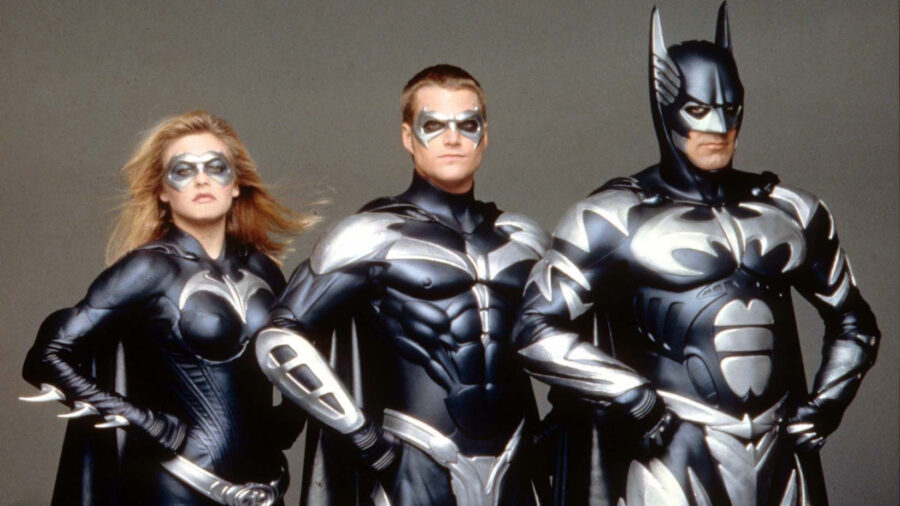
So, we have somewhat issued a moratorium on reexamining Batman & Robin. Its approach to superhero storytelling has become so out of fashion that it’s practically archaic. The idea that we can use superheroes as a vehicle for campy, tongue-in-cheek comedy has been relegated almost solely to films aimed at young children (see The Lego Batman Movie). We don’t want our superheroes to be jokes.
And yet, almost three decades later, it’s the jokey nature of Batman & Robin that actually makes it stand out from the crowd. And it’s a big reason why it’s time to argue for this widely derided cape-and-cowl comedy.
Yes, Batman & Robin is Good, Actually.
Batman & Robin Is An Homage
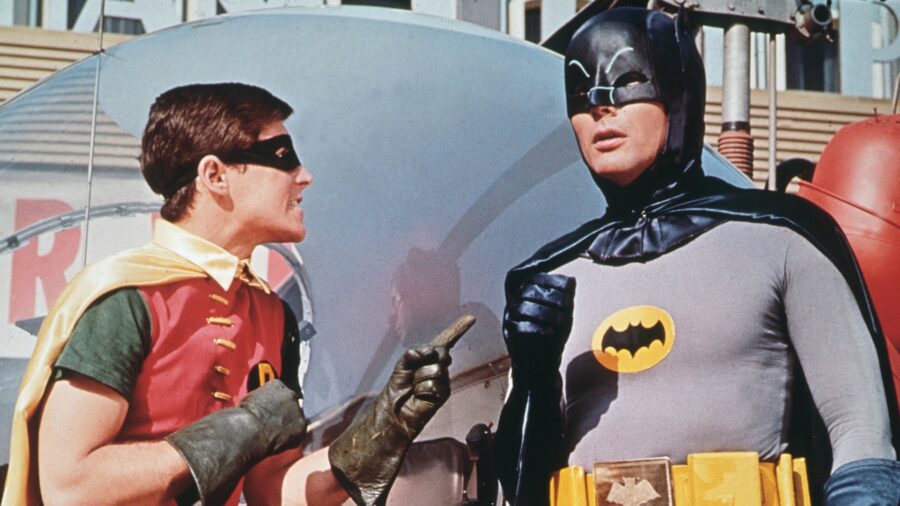
Before we can even begin to talk about Batman & Robin, we have to understand some important history regarding Batman as a pop culture icon. The character has been a mainstay in pop culture throughout many forms of media, but the first time Batman became a worldwide sensation was in the 1960s when the television show Batman hit the airwaves. Adam West and Burt Ward would define an entire generation’s outlook on Batman and Robin, but more importantly, this show would establish the idea that the villains were often the real stars you wanted to see.
Batman & Robin is clearly taking its inspiration directly from the television show Batman. Joel Schumacher had already injected some of that flamboyant energy into his previous entry, Batman Forever, but that film saved its campiness primarily for the villain performances and visual design. That ain’t the case with this movie. The camp mood is far more prevalent and all-encompassing throughout. But, the same can be said of Adam West’s Batman universe.
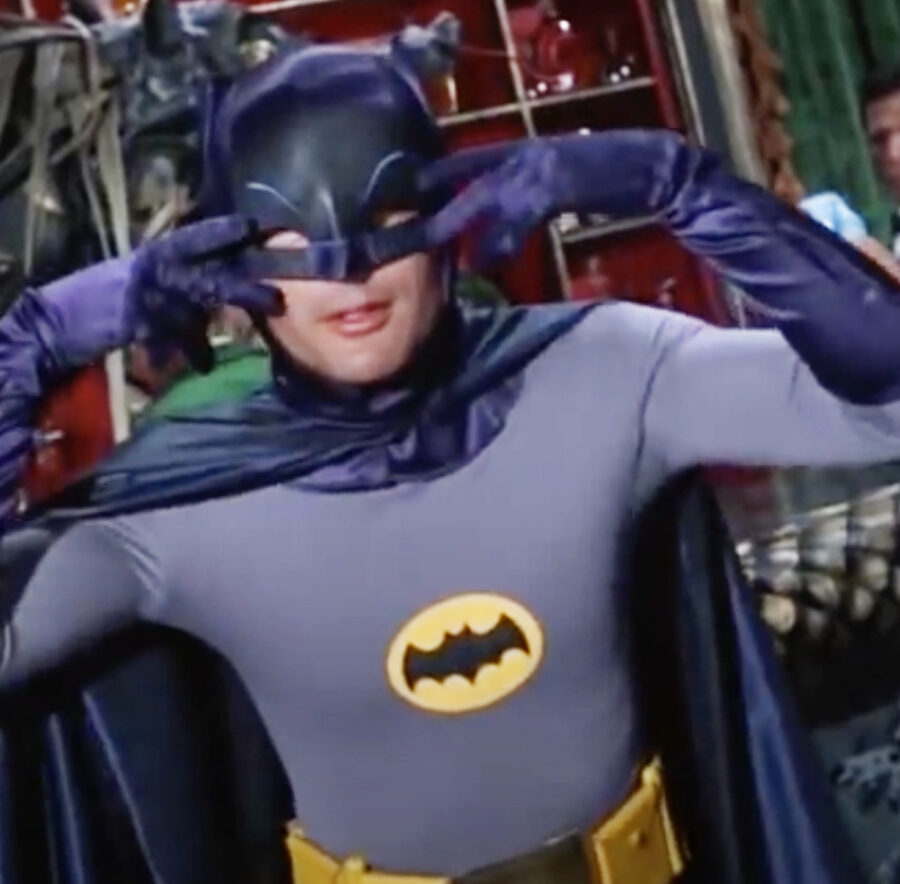
And that’s okay. Part of the reason Batman & Robin was rejected by audiences and fans is that they had seen a Batman on-screen that took itself seriously with the Tim Burton features. Batman Forever was certainly lighter but it didn’t come off as a gag at the expense of Batman as a concept. This film does and that irked most people, even though Batman as a character had proven popular by taking the same route as the Adam West version.
Basically, it’s okay for Batman to be used as a vehicle for ludicrous comedy. Batman & Robin shouldn’t be hated simply because it decided to be a comedy like the ’60s television show. If that’s a wall you can’t get past, that’s on you and not the movie.
Now, it is worth arguing if Batman & Robin is successful at being a comedy…
Stupid And Silly Isn’t Always A Bad Thing
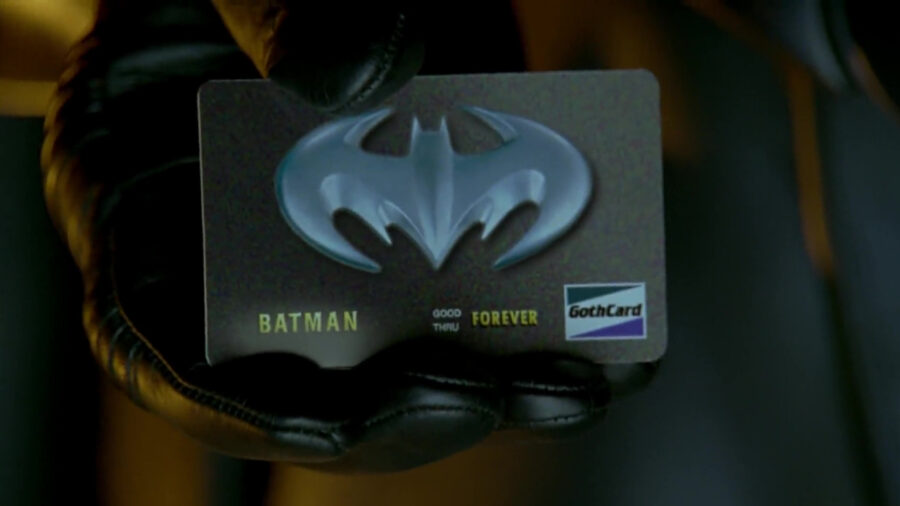
If you ask most people to describe why Batman & Robin is bad one of the things they’ll point to is Arnold Schwarzenegger’s character, Mr. Freeze, using puns in almost every line of dialogue. That kind of choice is almost deliberately grating in the same way dad jokes are. If that’s too much for you to bear, that’s understandable.
However, the choice to go this route shouldn’t be disqualified simply for being a choice. The same kind of relentless stupidity is present in the beloved superhero film Deadpool and its sequel. But, because we view Deadpool as a joke character, we are far more accepting of it as the norm. Batman & Robin doing the same with Batman and his universe makes us put our guard up because Batman should be Serious Business.
Frankly, that mindset is boring and will lead to homogenous interpretations of the character. Batman should be allowed to be ridiculous at times – I mean, this is a property predicated on a man that dresses up like a bat! – and Batman & Robin is arguably the most absurd live-action iteration of the character in existence.
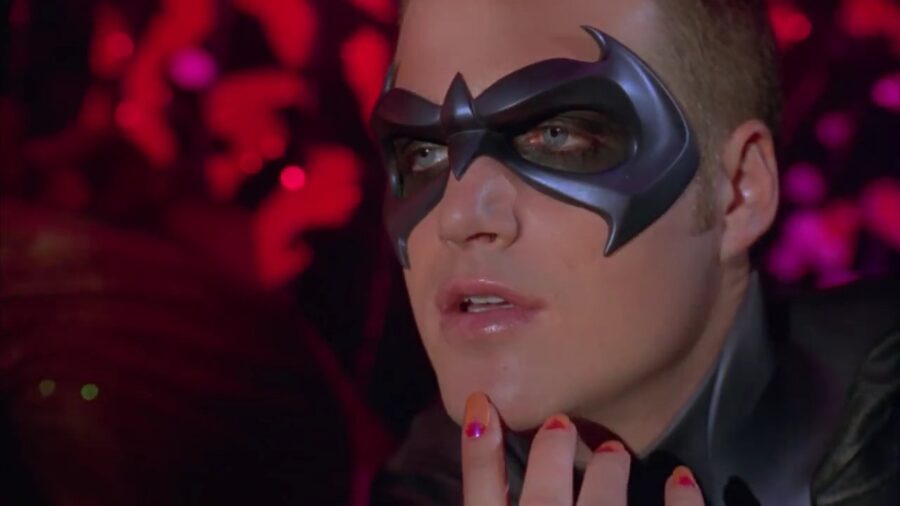
It’s the effectiveness of this absurdity that we need to reevaluate because Batman & Robin is a great example of being so knowingly off its rocker that it somehow completes the circle of “silly, stupid, groan-inducing, and back to silly.” This movie is more than aware of how nutty and parodic it’s being and it leans into that in wonderful fashion. The constant Mr. Freeze puns are the most forward-facing of these choices, but they aren’t outliers. The entire movie is poking fun at itself with infamously foolish bits like the Bat credit card or the delightful rubber lips gag.
These things have always been viewed as intrinsically bad in Batman & Robin because they are consciously dumb, but that awareness is vital to meeting the movie on its own terms. If the movie was being oblivious with its silliness and stupidity, then it would be worth criticizing as a failure. But this flick is doing exactly what it wants, and more times than not, it’s so farcical as to be nothing but laughable. And it’s okay to laugh at a Batman movie.
The Villains Deliver
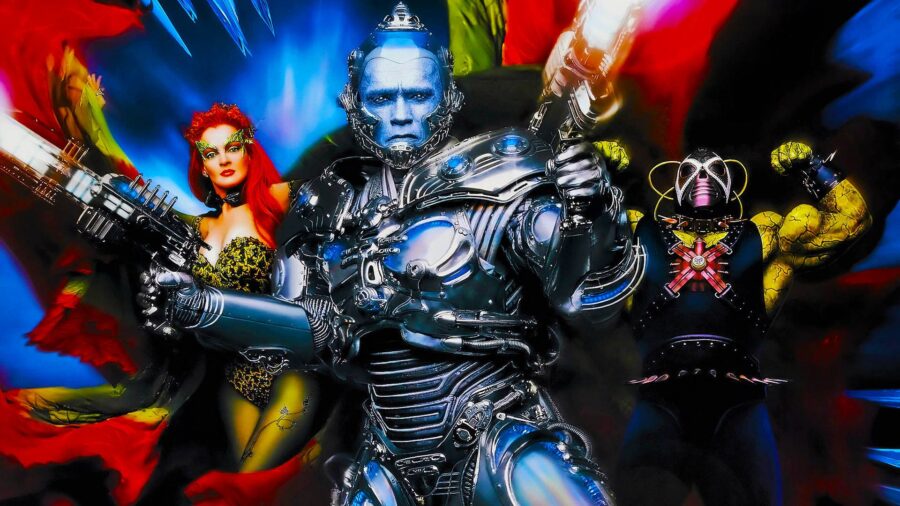
Speaking of Mr. Freeze, let’s talk about the villains of Batman & Robin. As stated, the villains of the Batman universe have often taken precedent over the heroes. The establishment of having notable guest stars play the villains on the Batman television series ingrained a specific idea of what Batman villains were supposed to be in pop culture: recognizable stars that are given an opportunity to cut loose with their most over-the-top acting choices.
And for all the flak Batman & Robin gets for Arnie’s pun-laden dialogue, his actual performance is rarely mentioned. Arnold thrives in movies where he’s allowed to go big, and Mr. Freeze allows him the chance to go bigger than ever. You can practically see Arnie’s teeth marks in the set as he goes for the gusto with every scene. It’s an earnest commitment that deserves to be highlighted. If all you ever talk about or remember from Arnie in this movie are his puns, you need to watch him again. He is capital-A acting in the best of ways.
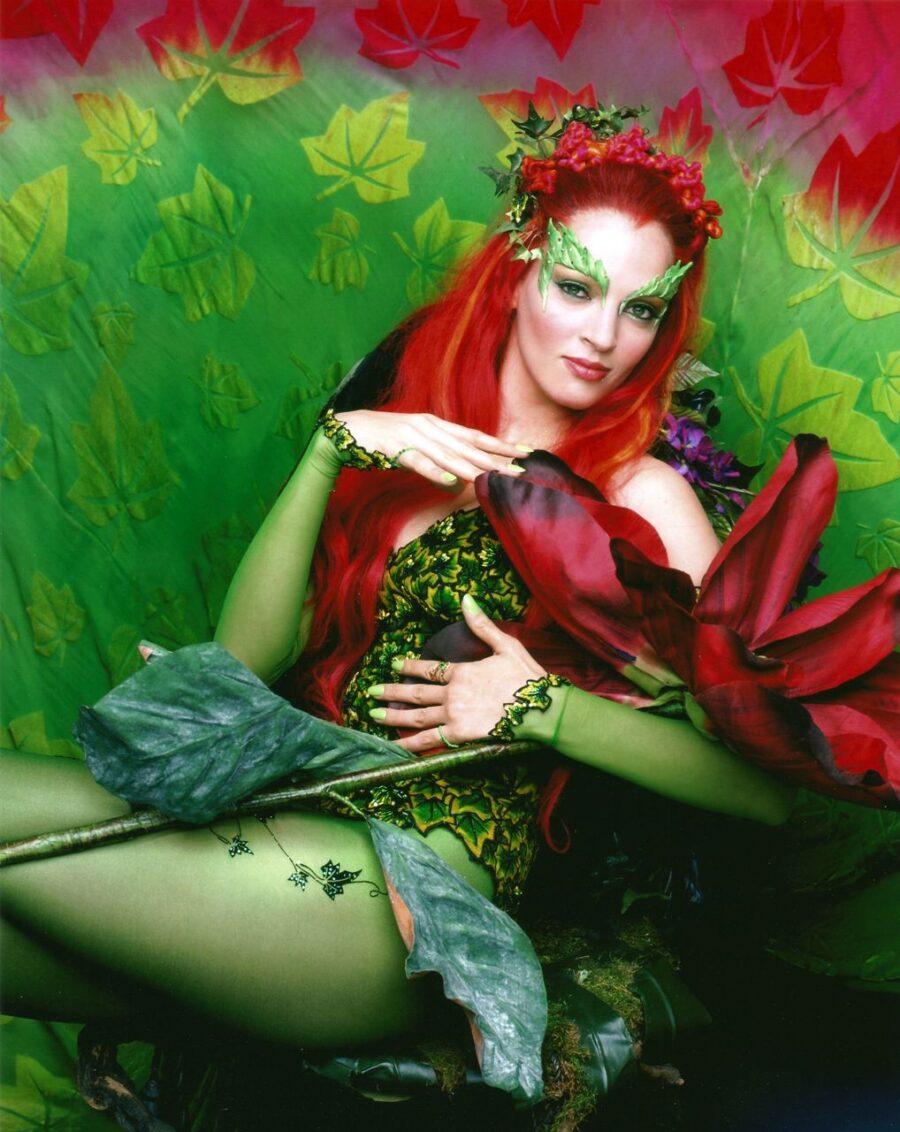
However, Batman & Robin‘s shining performance comes from Uma Thurman as Poison Ivy. Only three years after she became a hit star with Pulp Fiction, Thurman was cast as the sultry, empowered plant-themed foe and the entirety of her work in the film is perfection. Thurman gets the tone and delivery exactly right, having more fun than anyone else in the cast. Her few scenes playing off character actor John Glover are a hoot, and the movie sings every moment Thurman is on screen. Even most people who dismiss or hate this film admit that Thurman is the best thing about it.
And yeah, Bane is in this as a lunkheaded muscle goon. I don’t care about fealty to the source material as long as the iteration is entertaining on its own merits, and Bane is a dopey henchman in a very classic ’60s Batman fashion. If y’all love Bane so much, you got a whole movie now where he has a different funny voice.
A Formalist World
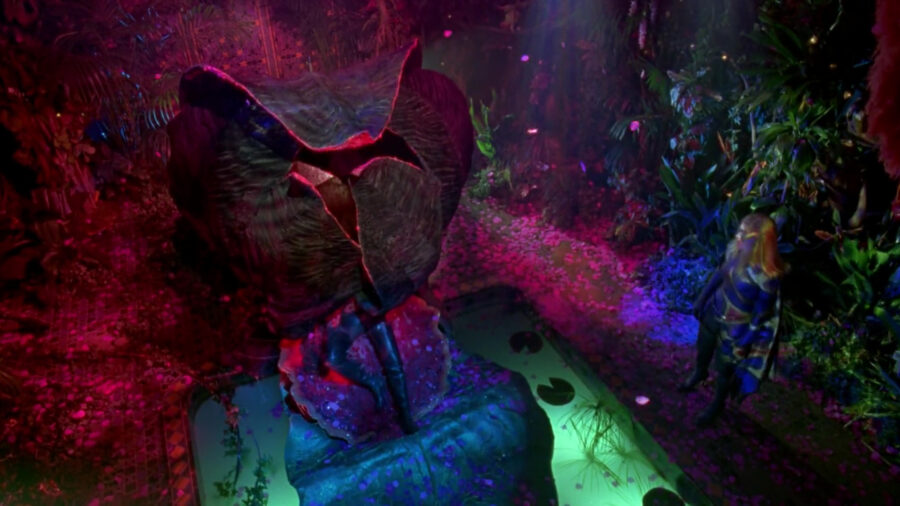
One of the things that bums me out about the superhero renaissance is how much realism became a requirement for the subgenre. As we began to take superheroes more seriously in our mainstream cinema, we expected that the filmmaking and style choices would reflect that seriousness. This has led to a movement in superhero movies that prioritizes believability over pure fantasy. And Batman & Robin is one of the least believable superhero movies you could ever see.
But that’s part of what makes it a joy to watch. Before the Nolan films, the Batman features were drenched in extreme and often totally fantastical design choices. With Joel Schumacher’s Batman Forever, those choices leaned toward more purposefully garish and colorful displays. Empowered by the huge success of Batman Forever, Batman & Robin doubles down on these choices and it turns the whole of Gotham City into a candy-coated wonderland.
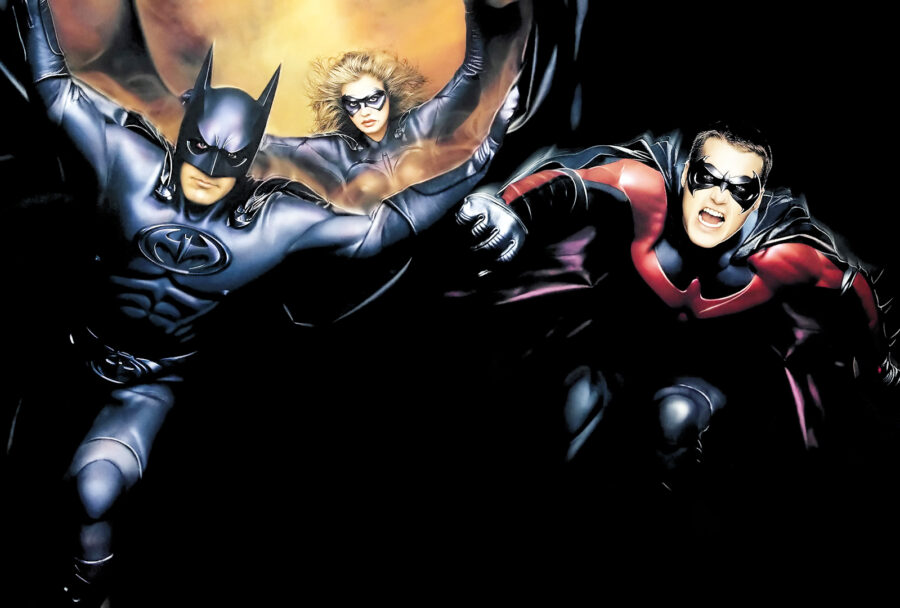
Schumacher often used the term “toyetic” to describe Batman & Robin, and he viewed that as a negative. It was a demand from the studio that he feels hindered his artistic desires. Years later, I feel that decision actually empowered Schumacher to take the silliness of the movie to its extremes in really satisfying ways. Now that the majority of what we see in effects blockbusters is completely digital, this is a movie that is overflowing with gorgeously crafted sets, costumes, vehicles, and miniatures. Texturally, this movie deserves reappraisal for being one of the last practically made formalist endeavors that went for the broadest audience possible.
This is all made much clearer thanks to the recent 4K remaster of Batman & Robin. The colors and camera choices are all saturated to maximum effect so that the entire film has the vibrancy one would associate with the most colorful of comic books. As a purely visual treat, this movie needs to be on your radar. If you are like me and the bland color palettes of the Marvel Cinematic Universe have got you down, go back and appreciate just how bold this movie goes when it wants to be colorful.
The Real Problem With Batman & Robin
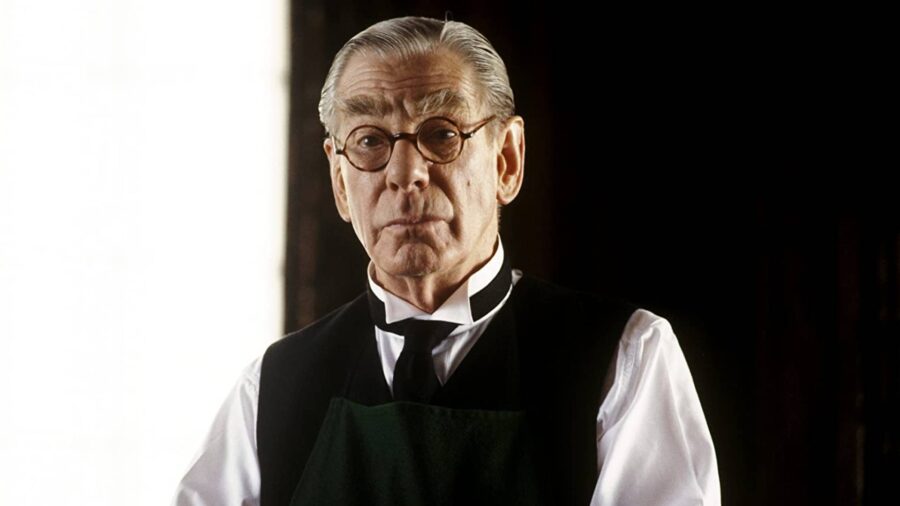
If you’ve gotten this far, I thank you for being open enough to consider my thoughts on Batman & Robin. But, let me clarify something: I’m not trying to say that Batman & Robin is a misunderstood masterpiece. I’m not saying the movie is flawless. What I am saying is that the big issues that have become synonymous with this film aren’t the real issues. The comedy and garishness are what the movie is going for. Those are goals it’s setting and I feel it achieves them.
However, Batman & Robin does have a problem, but it’s one I don’t see brought up when this movie gets criticized. The film’s biggest problem is when it drops all the comedy and goofball visuals and tries to be sincere. A big plotline in the film centers around loyal butler Alfred becoming sick with a fatal disease. While it’s great to see series stalwart Michael Gough get some spotlight, this storyline never hits the way it wants to for a few reasons.
The first is that it’s hard to feel any genuine emotional weight in a movie where a guy is trying to turn all of Gotham City into ice and making puns along the way. That element on its own is actually fun, but there is a tonal dissonance that happens when the movie wants to make any attempt at being somber or reflective. This was handled much better in Batman Forever because its wackiness wasn’t so self-parodic. It was still kooky but it was earnestly kooky as opposed to Batman & Robin‘s camp kookiness.
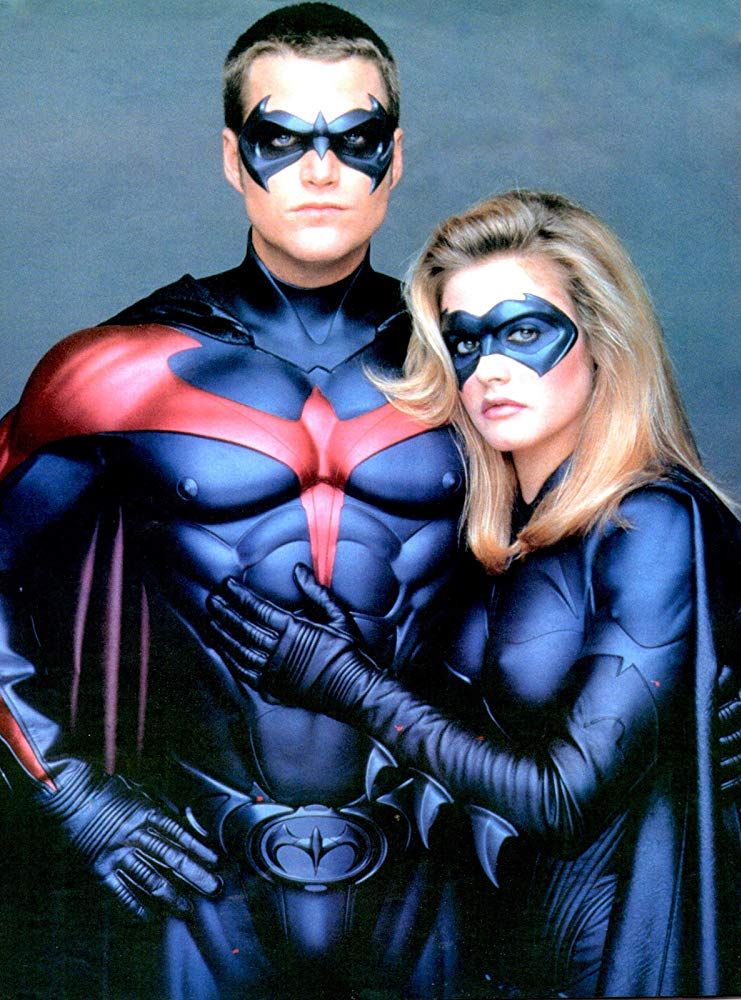
The other problem with Batman & Robin‘s attempts at sincerity is that the movie is overloaded with plotlines. On top of the Alfred storyline vying for emotional resonance, we also have more strife between Bruce and Dick (Chris O’Donnell), a newcomer to the team in Barbara (who pretty much gets a rehash of Robin’s plot from Batman Forever), the desire to make Mr. Freeze sympathetic with a plot involving his cryogenically frozen wife, and even a steady girlfriend/potential fiance for Bruce who is barely even in the movie!
Batman & Robin doubled down on the preposterous fun that Batman Forever had, but it also doubled down on attempts at legitimate drama. This stuffs the movie to its gills and makes the warring tonal attempts clash against each other. Thankfully, the movie is often more ridiculous than it is sincere, but this is the real problem that keeps the movie from working more than it does.
I’m sure there are criticisms you have that I didn’t address – George Clooney’s acting is one that comes up often, and he’s doing a fine enough riff on Adam West’s square-jawed goofiness – but you’ve heard all those criticisms a dozen times with Batman & Robin. It’s gotten to a point where trying to highlight anything from this movie is seen as being completely insane. This is a movie that is often called one of the worst movies of all time.
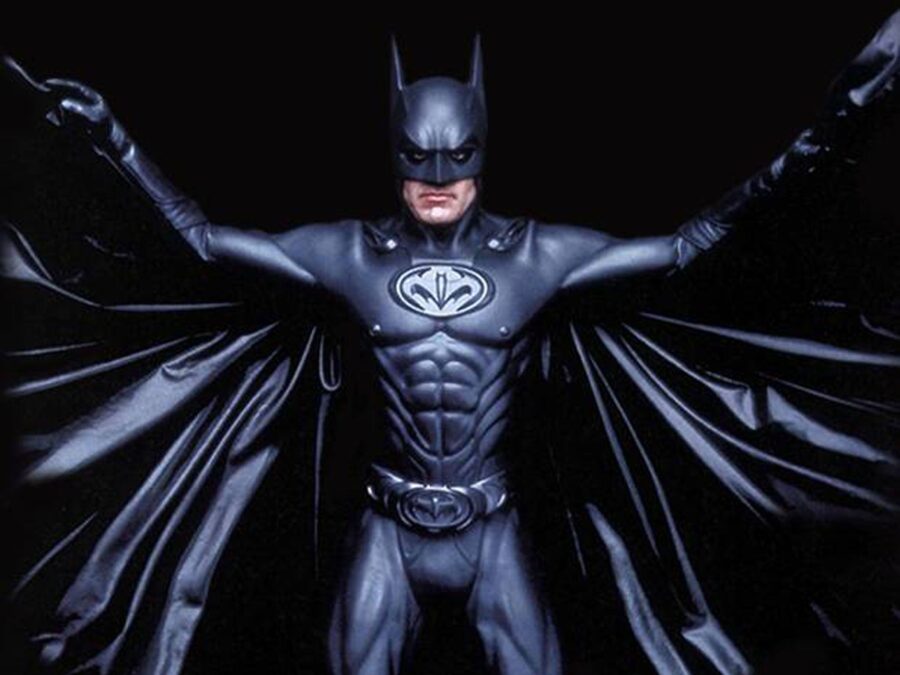
I’ve got news for you: if you think Batman & Robin is one of the worst movies of all time, you haven’t seen near enough movies. It’s more apt to call this a movie most people didn’t want at the time. With lots of time behind it – and plenty of Serious Business Batman movies to fill that quota for those fans – Batman & Robin is childishly charming and honestly lighthearted.
In 2020, we’re all looking for any escape we can get in our media, and a lot of that is lighthearted fare. Batman & Robin is a flick that feels perfect for young kids who want to get into Batman. It’s colorful, funny, and a valid interpretation of the character and his world. It’s not the worst Batman movie (this is). It’s not even one of the worst superhero movies. We deserve to give this flick a second chance because we’re never going to get another like it ever again.
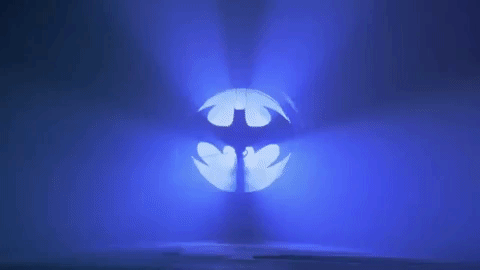












Login with Google